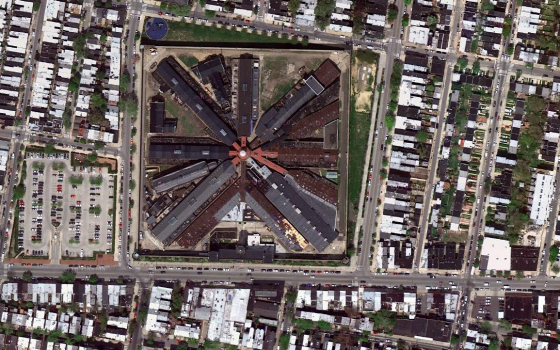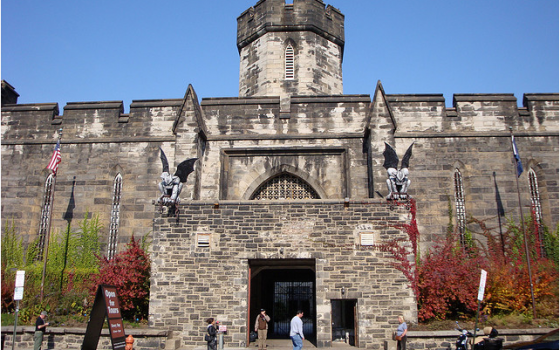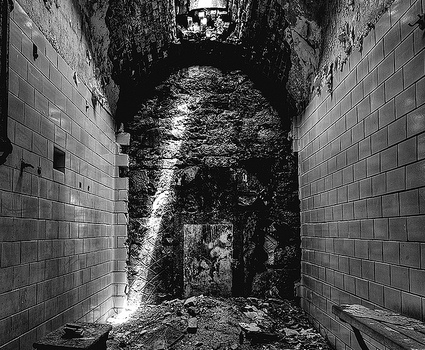John Haviland (1792-1852) was the British architect behind the design of the Eastern State Penitentiary. In 1821, four different architects had submitted design proposals for the new prison, and it was ultimately Haviland’s design which was selected. The architect had drawn inspiration for his design from asylums and penitentiaries built in late 18th century England and Ireland. Our friend William Strickland (who would later design several notable buildings, including the Merchant’s Exchange in 1832) had also submitted a possible design which was rejected. Strickland was at first selected to oversee the construction but was later fired (in 1822) for unspecified reasons. Instead, Haviland was given the opportunity to oversee the creation of his own design.
The design proposed by John Haviland was known as the radial plan. From overhead, the prison looks akin to a bike wheel. Cells were contained within the spokes of the wheel while a guard tower overlooks the Penitentiary from the center. Despite its decrepit and daunting appearance, this prison was revolutionary in that it set forth the new goal of promoting rehabilitation rather than punishment (as prisons of the past had). Inmates were placed in isolation within the wings of the prison and guards could overlook their confinement from the central tower. Cells were composed of concrete with a single glass skylight on top through which both guards, and supposedly God, could observe them (the skylights were known as the “Eye of God”).
Construction was finished in 1829 and the penitentiary remained in operation until 1971. At the time, the prison amounted to the most expensive public project in the United States. Haviland’s design would eventually become a model for over 300 prisons built worldwide. However, in spite of its initial goals, the prison was forced to abandon its solitary confinement system in 1913 (due to overcrowding problems). It served as a congregational prison until its closing. Eastern State Penitentiary is now a National Historic Landmark and is open as a museum year round, seven days a week. —-Alex Graziano



